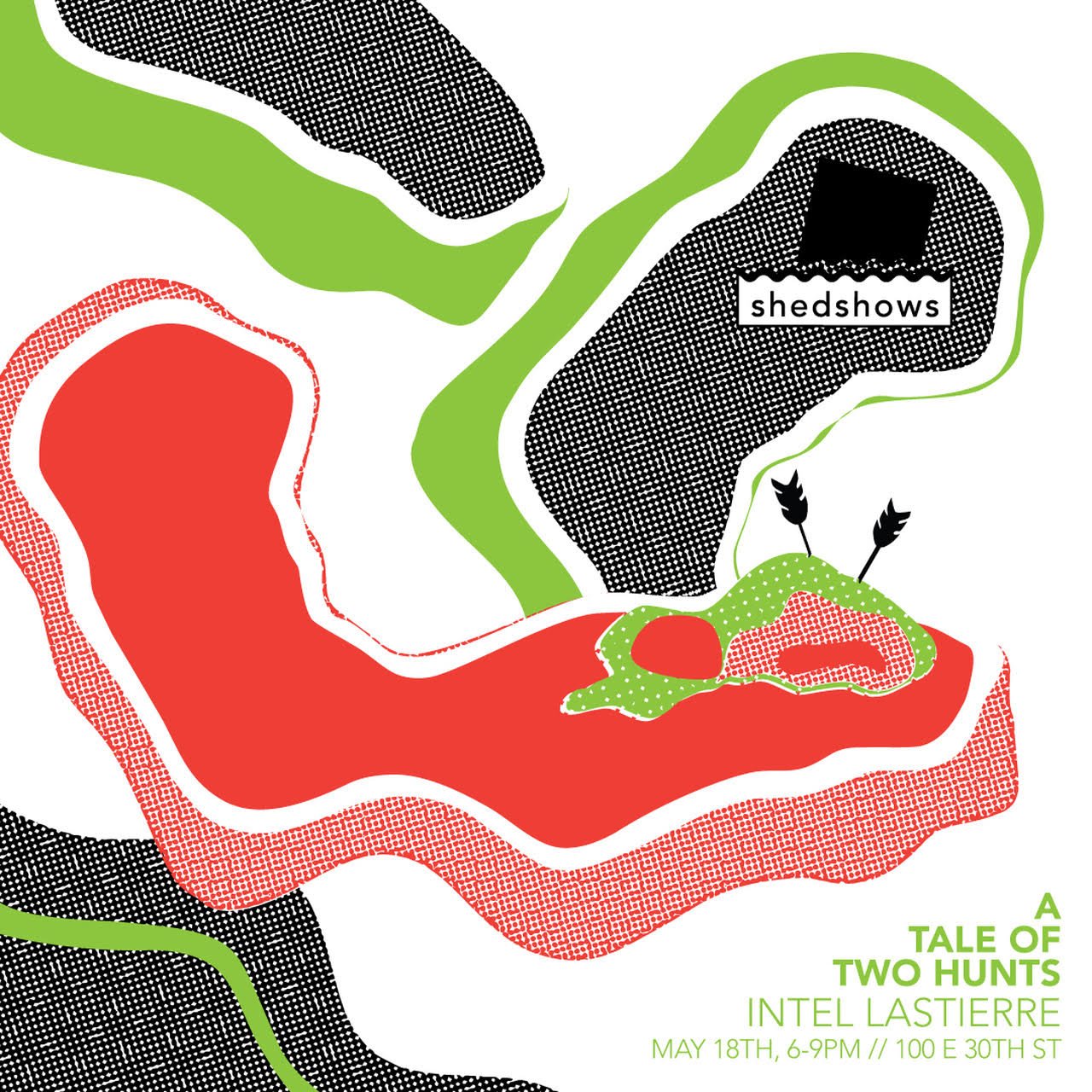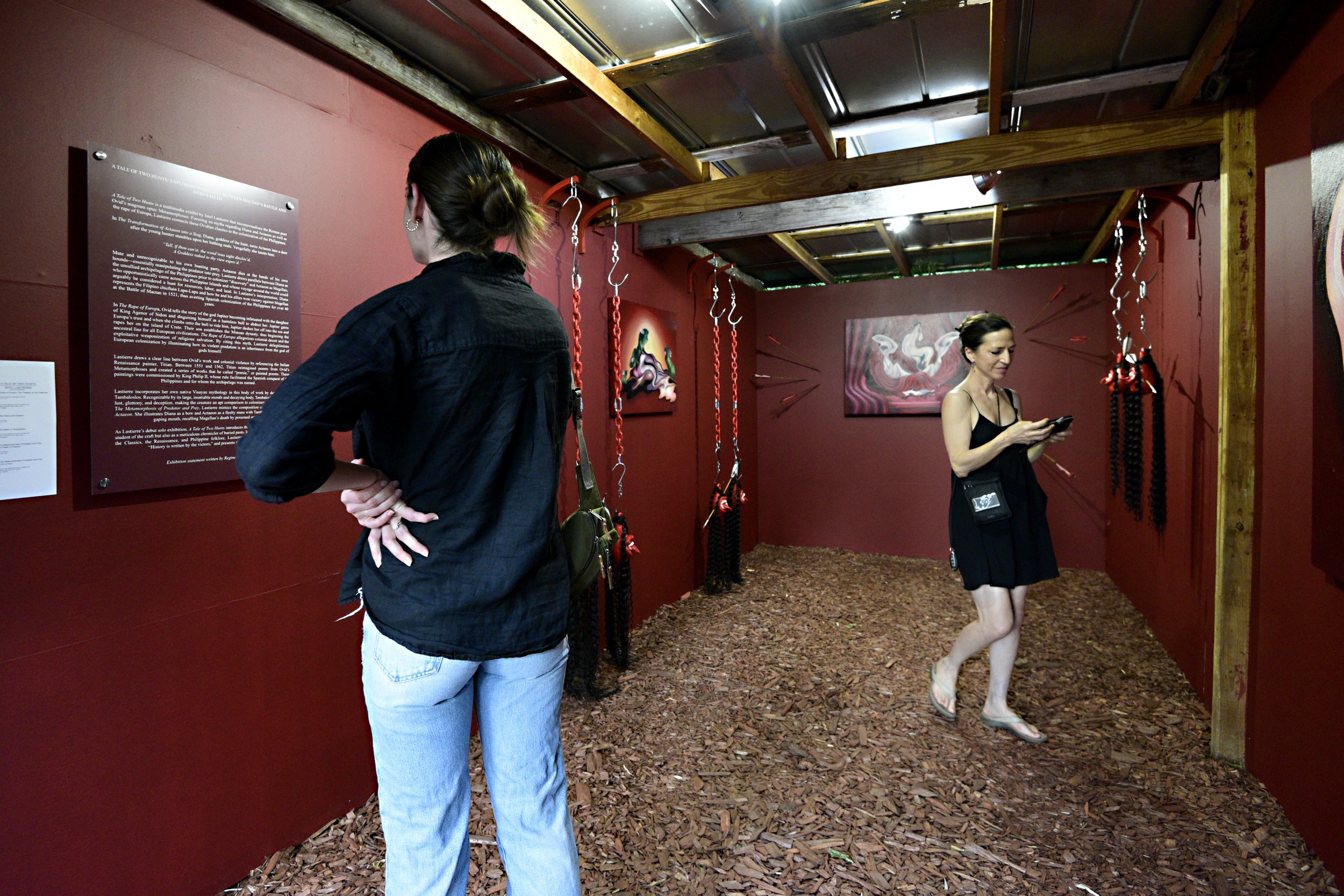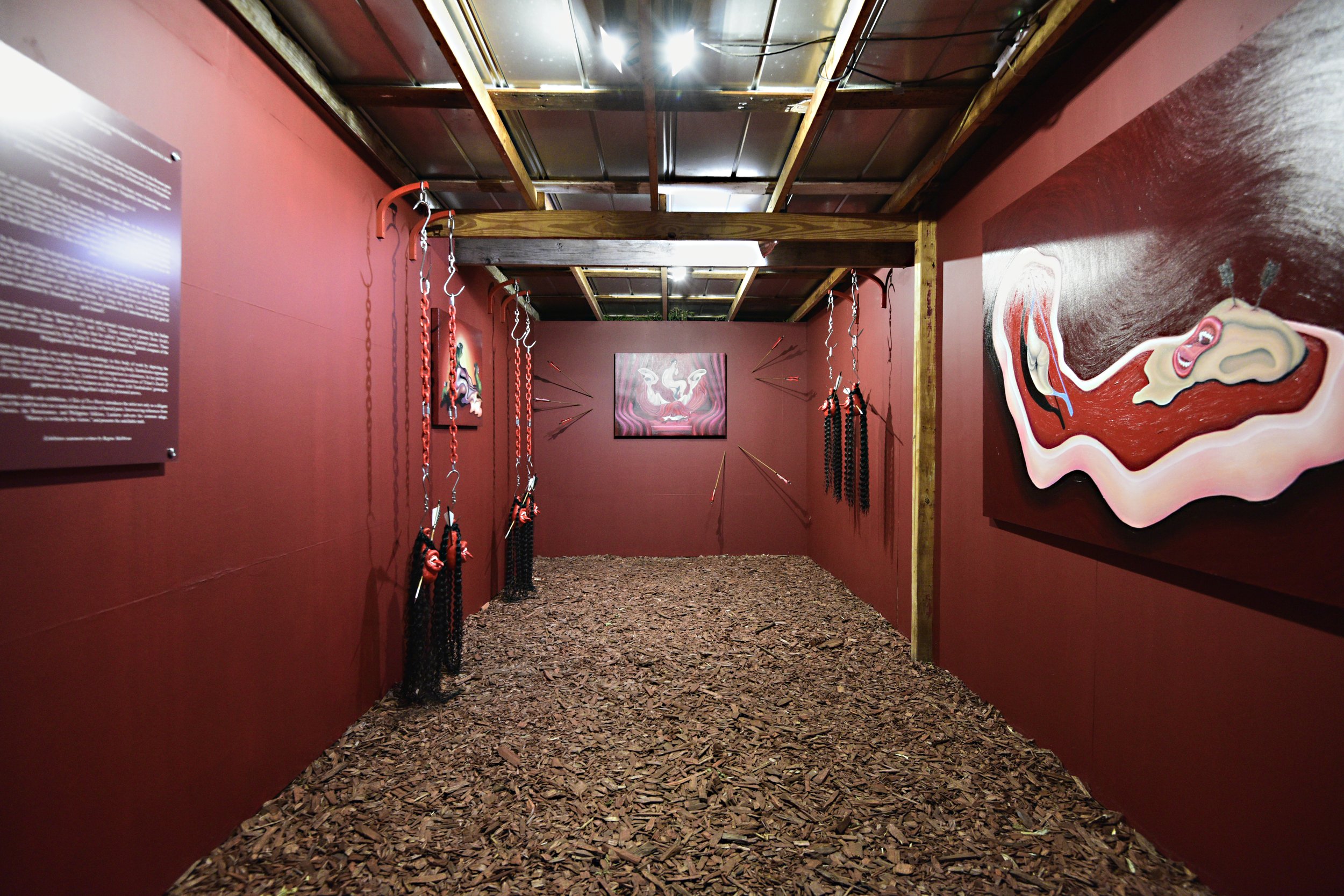
A TALE OF TWO HUNTS
EXPLORING PARALLELS BETWEEN MACTAN’S BATTLE AND OVID’S MYTH
A Tale of Two Hunts is a multimedia exhibit by Intel Lastierre that recontextualizes the Roman poet Ovid’s magnum opus: Metamorphoses. Focusing on myths regarding Diana and Actaeon as well as the rape of Europa, Lastierre connects these Ovidian classics to the colonization of the Philippines.
In The Transformation of Actaeon into a Stag, Diana, goddess of the hunt, turns Actaeon into a deer after the young hunter stumbles upon her bathing nude. Vengefully she taunts him:
“Tell, if thou can’st, the wond’rous sight disclos’d,
A Goddess naked to thy view expos’d.”
Mute and unrecognizable to his own hunting party, Actaeon dies at the hands of his own hounds—essentially manipulating the predator into prey. Lastierre draws parallels between Diana as the unsullied archipelago of the Philippines prior to colonizer “discovery” and Actaeon as Magellan, who opportunistically came across the Philippine Islands and whose voyage around the world could arguably be considered a hunt for resources, labor, and land. In Lastierre’s interpretation, Diana represents the Filipino chieftain Lapu-Lapu and how he and his allies won victory against Magellan at the Battle of Mactan in 1521, thus averting Spanish colonization of the Philippines for over 40 years.
In The Rape of Europa, Ovid tells the story of the god Jupiter becoming infatuated with the daughter of King Agenor of Sidon and disguising himself as a harmless bull to abduct her. Jupiter gains Europa’s trust and when she climbs onto the bull to ride him, Jupiter dashes her off into the sea and rapes her on the island of Crete. Their son establishes the Minoan dynasty, thus beginning the ancestral line for all European civilizations. The Rape of Europa allegorizes colonial deceit and the exploitative weaponization of religious salvation. By citing this myth, Lastierre delegitimizes European colonization by illuminating how its violent predation is an inheritance from the god of gods himself.
Lastierre draws a clear line between Ovid’s work and colonial violence by referencing the Italian Renaissance painter, Titian. Between 1551 and 1562, Titian reimagined poems from Ovid’s Metamorphoses and created a series of works that he called “poesie,” or painted poems. These paintings were commissioned by King Philip II, whose rule facilitated the Spanish conquest of the Philippines and for whom the archipelago was named.
Lastierre incorporates her own native Visayan mythology in this body of work by depicting the Tambaloslos. Recognizable by its large, insatiable mouth and decaying body, Tambaloslos represents lust, gluttony, and deception, making the creature an apt comparison to colonizers. In her painting, The Metamorphosis of Predator and Prey, Lastierre mimics the composition of Titian’s Death of Actaeon. She illustrates Diana as a bow and Actaeon as a fleshy mass with Tambaloslos’ grotesque, gaping mouth, recalling Magellan’s death by poisoned arrows.
As Lastierre’s debut solo exhibition, A Tale of Two Hunts introduces the artist not only as a diligent student of the craft but also as a meticulous chronicler of buried pasts. Interweaving references from the Classics, the Renaissance, and Philippine folklore, Lastierre subverts the common adage, “History is written by the victors,” and presents the unkillable truth.
Exhibition statement written by Regine Malibiran




































